The Language of Art: An Interview with Joseph Kosuth
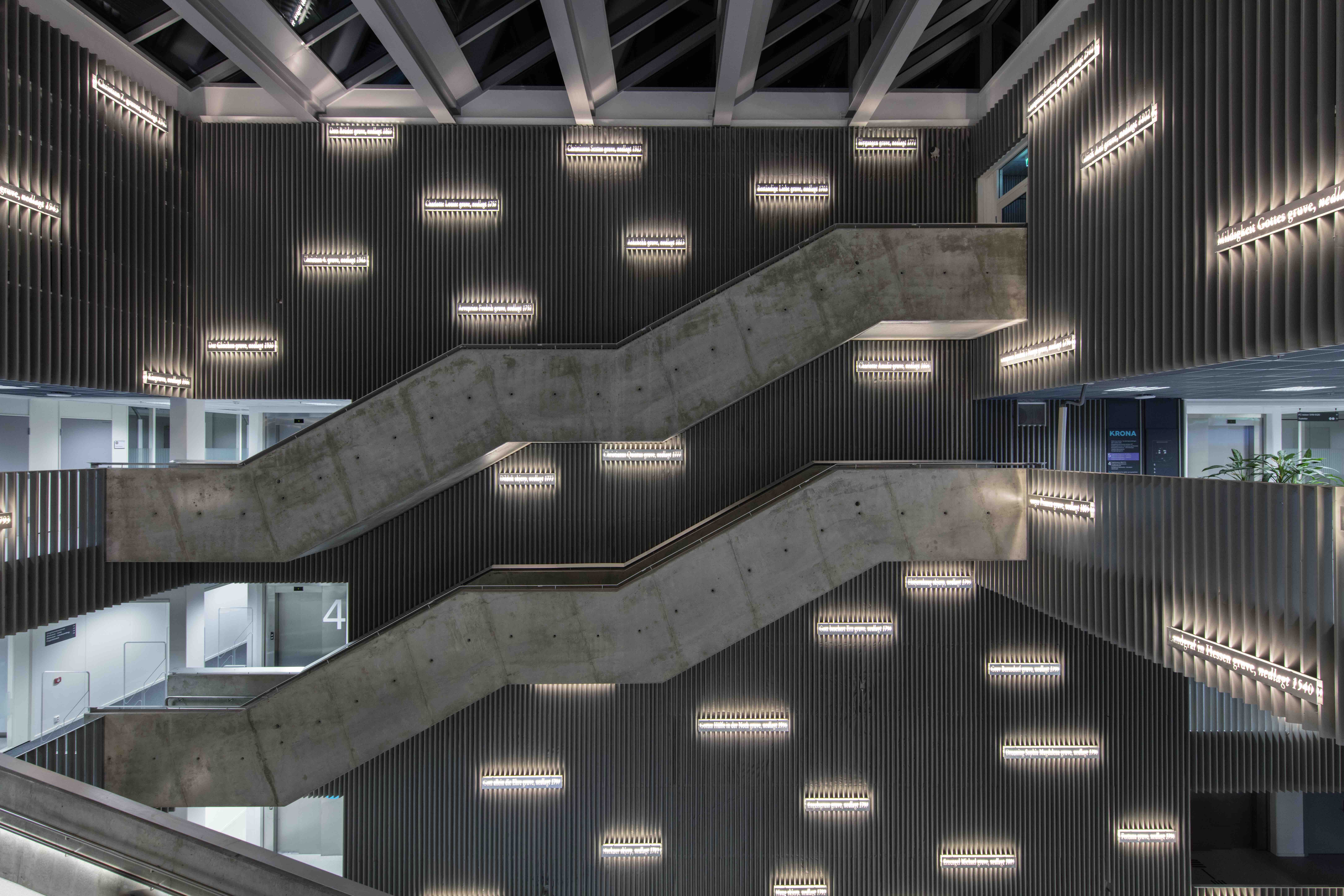
A foremost pioneer in Conceptual and Installation art, Joseph Kosuth is well-noted for the language-based artworks and appropriation techniques defining his oeuvre since the 1960s. Throughout his career, Kosuth’s practice has centered on the role of language and meaning within art.
A foremost pioneer in Conceptual and Installation art, Joseph Kosuth is well-noted for the language-based artworks and appropriation techniques defining his oeuvre since the 1960s. Throughout his career, Kosuth’s practice has centered on the role of language and meaning within art. His study of anthropology and philosophy, particularly the ideologies of Ludwig Wittgenstein, greatly impacted the development of his artistry. Kosuth devoted his work to exploring the use of words in place of visual imagery, as well as the relationships between ideas, words and the images themselves. Investigating these connections directly, his seminal artwork, One and Three Chairs represents a chair in three distinct ways: a manufactured chair, a photograph and a copy of a dictionary entry for the word “chair.” In his series piece Art as Idea as Idea, Kosuth removes all objects and images in favor of definitions clipped from dictionary entries, to emphasize how language can purely convey meaning. He further believes that any traces of the artist’s hand should be eliminated from production so that ideas may be expressed directly, immediately and wholly. Over more than five decades, Kosuth has created a substantial body of artwork that speaks to how we experience, comprehend and respond to language. His significant role in art history influences the work of current artists and will continue to impact the artists of generations to follow.
ArtDependence: How has your study of anthropology informed your work as an artist?
Joseph Kosuth: It clarified for me in a deeper way how the agency of the artist was concerned with the production of meaning. It was important, also, to see the role of art in the larger framework of culture in general. Of course, the concept of art which was first only Western and is now ‘international’ that artists apply themselves to increasingly is part of a mostly western domination of the world’s culture brought on by a world global economy.
AD: In what ways can language and context have more impact than the actual imagery of art itself?
JK: The role of context and contingency between its elements makes language a useful tool in seeing how meaning is constructed in culture. The ontological issues which dominate contemporary art, for some artists consciously and for other artists much less so, go to the very basis of why we make art at this moment of history. Without this understanding it is impossible to distinguish between the authentic art of our time and that which has its meaning provided by the market as it continues traditions unreflexively.
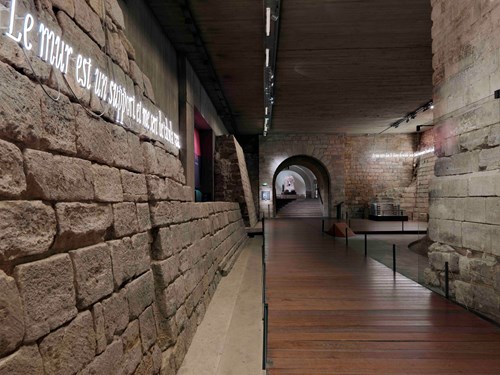
Joseph Kosuth, ‘ni apparence ni illusion’ / ‘Neither Appearance Nor Illusion’, 2009. Musée du Louvre, Paris, France. This large-scale work by Joseph Kosuth first opened as a temporary installation in the ancient moats of the Museum’s Sully Wing in 2009. Now inaugurated as a permanent installation, ‘Ni Apparence, Ni Illusion’ is located in the Charles V Hall and accessible via the Carrousel du Louvre galleries. Courtesy Joseph Kosuth Studio and Musée du Louvre. © Adagp, Paris 2009 Photograph: Florian Kleinefenn
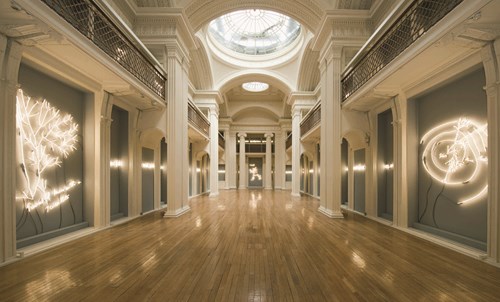
Joseph Kosuth, ‘An Interpretation of This Title’, Nietzsche, Darwin and the Paradox of Content, 2009. Georgian Gallery, Talbot Rice Gallery, Edinburgh, UK, 2009. Commissioned for the 2009 Edinburgh International Festival. Courtesy Joseph Kosuth Studio and Talbot Rice Gallery. Photograph: Paul Zanre Photography
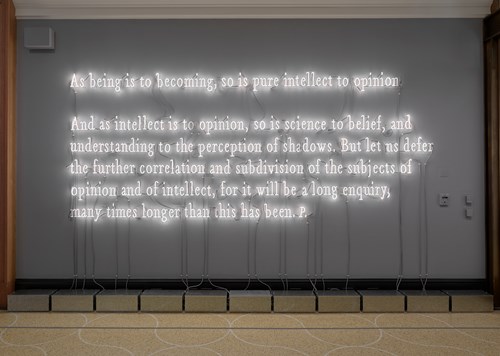
Joseph Kosuth, ‘Intellect to Opinion’, 2017. Exhibited on the occasion of ‘Plato in L.A.: Contemporary Artists’ Visions’ at The Getty Villa, USA, 2018. Courtesy Joseph Kosuth Studio and The Getty Villa. Photograph: Robert Wedemeyer
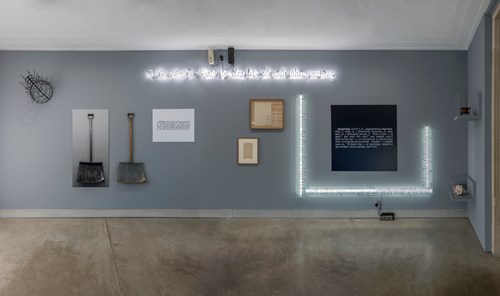
Joseph Kosuth, ‘Plays of / for a Respirateur’ An Installation by Joseph Kosuth. Philadelphia Museum of Art, Philadelphia, USA, 2016. Courtesy Joseph Kosuth Studio and Philadelphia Museum of Art. Photograph: Joseph Hu.
AD: How would you define the philosophical and moral responsibility of artists in the art they create?
JK: They do it through making art, which is informed by that horizon line of mass culture which has shaped all of our consciousness. Without that reflexive role of art, we remain blind to the political soil within which all of our ideas grow. Both Nietzsche and Wittgenstein, the last philosophers that spoke before philosophy died in the academy as a category of history, nominated art as the way out of the morass of verbal speculation. That reflection on culture manifested as a form of consciousness which art constitutes is the spiral in which we must see ourselves before we can proceed. It is what nourishes our political life.
AD: You have said: “I was always interested in the limits of language and, of course, there’s no better way of demonstrating that than with definitions of colors.” Why are colors particularly relevant for defining the boundaries of language?
JK: The conversation this is from was about my definition works. What is better for demonstrating the limits of language than the definition of a color? No text is more tortured in a such a concise way, there really is no better place to experience the limits of language.
AD: You have described your artworks as "investigations." How do the works and your approach to creating them integrate with this concept?
JK: I guess like Duchamp I wanted to insist that art was a serious activity, which is why we find so much humor in Duchamp, Reinhardt, and Magritte, revealing, no utilizing a contradiction which protects the seriousness that their work constitutes. I took ‘Investigations’ from Wittgenstein obviously since already in my early 20’s I felt philosophy could only survive through being art (‘show me’ as Wittgenstein said) and not being called philosophy. I was 23 when I wrote ‘Art After Philosophy’ and I had been thinking that way already for a few years at that point. Investigations were a kind of container to protect the activity of art, as I was doing it, from being part of decoration, the market, fashion, ‘expression’ and so on. With Greenberg’s idea of late Modernism, it looked like art would become a kind of necktie for over the couch, and that was already in the 1960’s. Like Duchamp, I saw art as an intellectual activity. Thinking that was certainly not at home in America, so I saw it as a necessary statement to be made, a fight, really to be made. But remember the Investigations ended in the mid-1970’s, at least the use of that ‘container’ for my work. Of course, that’s what I continued doing anyway, working in a series of course kept that going.

Joseph Kosuth, ‘Mondrian’s Work XI’, 2015. Exhibited on the occasion of ‘Joseph Kosuth: A Short History of My Thought’ at Anna Schwartz Gallery, Melbourne, Australia, 2017. Courtesy Joseph Kosuth Studio and Anna Schwartz Gallery. Photograph: Zan Wimberley.
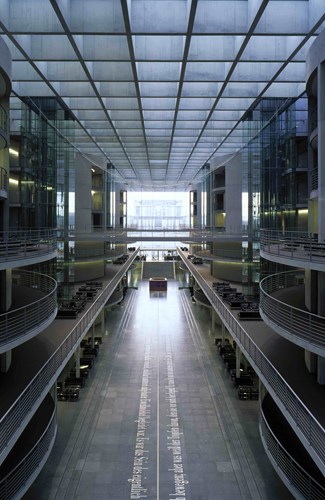
Joseph Kosuth, ‘Was war also das Leben? (Berlin, T.M. und R.H.)’, 2001. Paul-Löbe-Haus (German Parliament), Berlin, Germany. Courtesy Joseph Kosuth Studio.
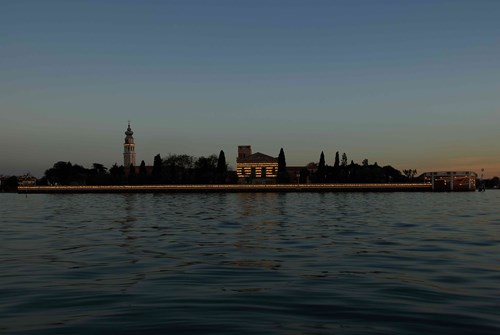
Joseph Kosuth, ‘Il Linguaggio dell’Equilibrio’ / ‘The Language of Equilibrium’, 2007. Venice Biennale, Isola of San Lazzaro, Italy. Courtesy Joseph Kosuth Studio.
AD: For both your artwork and the audience’s interpretations, you have mentioned “spaces” and “the gap between” as being important. Expound upon your thoughts there.
JK: In this sense: the audience brings the punctuation.
AD: Rather than embracing a signature artistic style, you have said: “My work is fragmentary. I want to be able to continue to play.” What are you currently exploring in your art?
JK: Well, you could say that all artists are working on one big work, which is their life’s work. That becomes apparent when you see a retrospective. When an artist like Bruce Nauman, an artist that I respect very much and feel a lot of affinity with, has a retrospective, the curator really needs to be intelligent and understand his work. If not, it looks like an art school group show, which is what happened some years ago at a museum in New York. You might have noticed that I haven’t had a retrospective in the US yet, this is probably the result of my standards being too high. (Laughs.) Actually, one is actually coming along-- maybe.
AD: What do you feel has been your greatest contribution as a Conceptual artist?
JK: I do think that Conceptual art constituted a sea of change in the practice of art. The relevant question was no longer how but why. Not ’how is it made?’, but ‘why am I making it?’. With this the responsibility of the artist and the moral agency of the artist became part of the conversation. This gave a lifeline to the political nature of art being a part and parcel of what constitutes it. By inserting questioning the nature of art as being central to its making process, art’s philosophical nature could be more clearly manifested, and the artist’s need to control the meaning making process could be made more apparent. It made questions of ontology central rather than ones of craft. But one of the most important contributions has been that we did away with the model of the artist as the expressionist witch doctor, the Christ like purveyor of drips and dabs and maker of auratic valuables. This evened out the playing field about who could be an artist. Let’s face it, women did not do well playing Christ. The biographic monographic tradition was stacked against them. We only began seeing women taking their rightful place as equal makers of relevant art after Conceptual art made the quality of ideas the arbiter of value rather than the implicit one of gender under the old arrangement. I’m probably proudest of being part of that contribution.
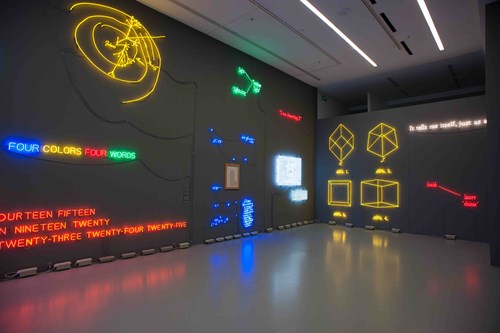
Joseph Kosuth, ‘Amneziya’. Museum of Multimedia Art, Moscow, Russia, 2015. Courtesy Joseph Kosuth Studio and MAMM.

Joseph Kosuth, ‘#II49. (On Color/Multi #1)’, 1991. Exhibited on the occasion of ‘Agnosia, an Illuminated Ontology’ an Installation by Joseph Kosuth at Sean Kelly Gallery, New York, USA, 2015. Courtesy Joseph Kosuth Studio and Sean Kelly Gallery New York. Photograph: Jason Wyche.
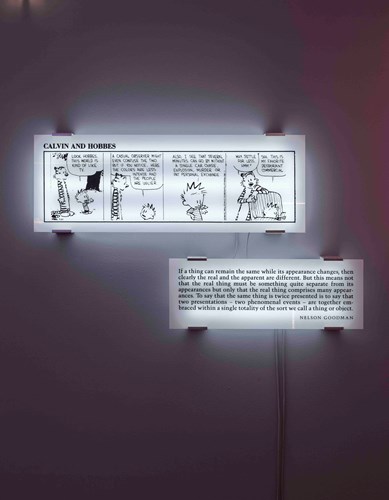
Joseph Kosuth, ‘Double Reading #20’, 1993. Exhibited on the occasion of ‘Agnosia, an Illuminated Ontology’ an Installation by Joseph Kosuth at Sean Kelly Gallery, New York, USA, 2015. Courtesy Joseph Kosuth Studio and Sean Kelly Gallery New York. Photograph: Jason Wyche.
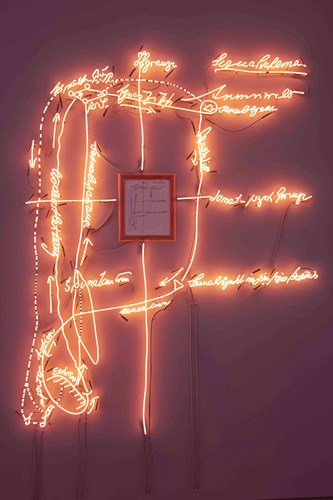
Joseph Kosuth, ‘A Conditioning of Consciousness’, 1988. Exhibited on the occasion of ‘Agnosia, an Illuminated Ontology’ an Installation by Joseph Kosuth at Sean Kelly Gallery, New York, USA, 2015. Courtesy Joseph Kosuth Studio and Sean Kelly Gallery New York. Photograph: Jason Wyche.
